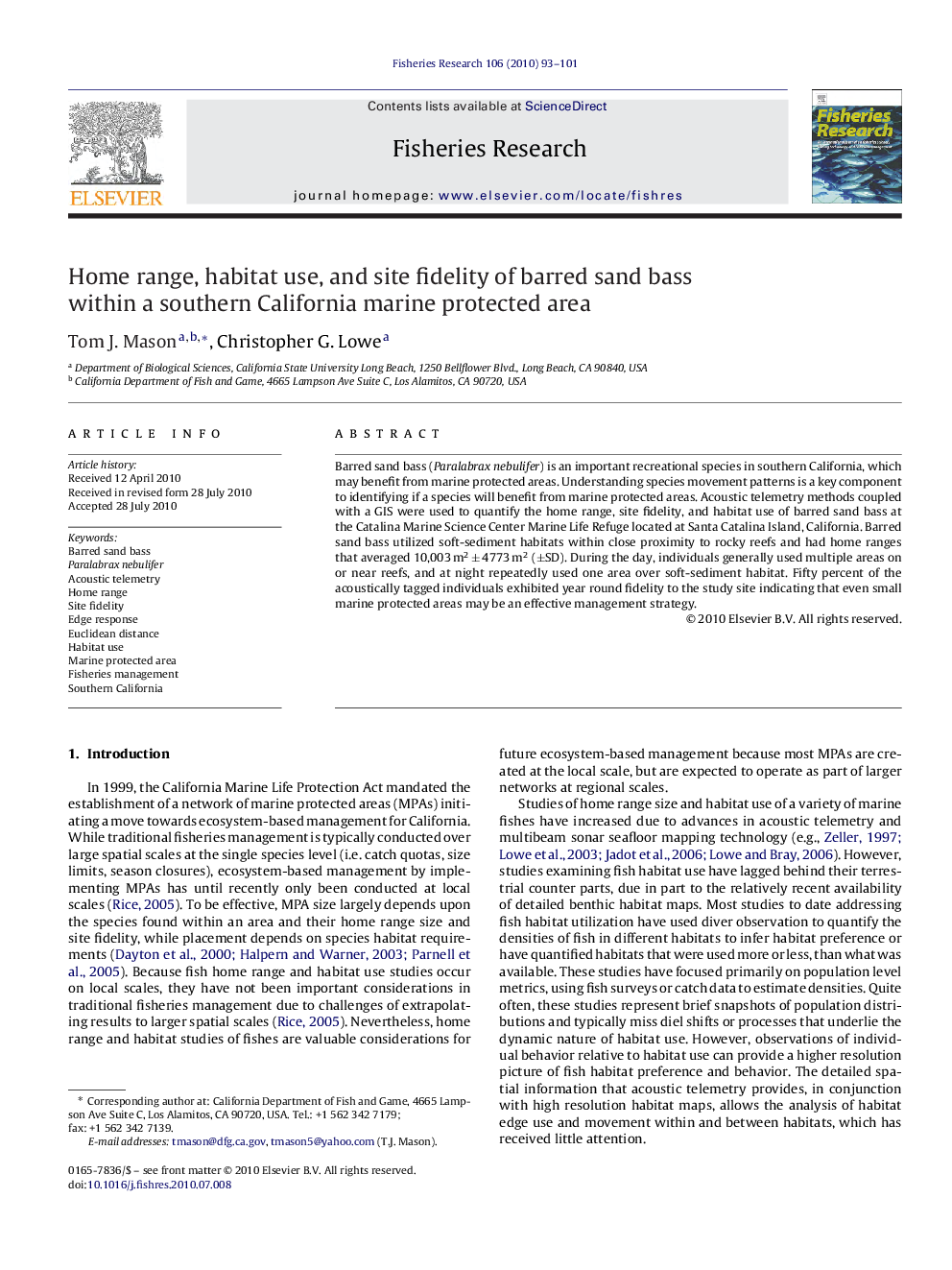| کد مقاله | کد نشریه | سال انتشار | مقاله انگلیسی | نسخه تمام متن |
|---|---|---|---|---|
| 4543935 | 1327171 | 2010 | 9 صفحه PDF | دانلود رایگان |

Barred sand bass (Paralabrax nebulifer) is an important recreational species in southern California, which may benefit from marine protected areas. Understanding species movement patterns is a key component to identifying if a species will benefit from marine protected areas. Acoustic telemetry methods coupled with a GIS were used to quantify the home range, site fidelity, and habitat use of barred sand bass at the Catalina Marine Science Center Marine Life Refuge located at Santa Catalina Island, California. Barred sand bass utilized soft-sediment habitats within close proximity to rocky reefs and had home ranges that averaged 10,003 m2 ± 4773 m2 (±SD). During the day, individuals generally used multiple areas on or near reefs, and at night repeatedly used one area over soft-sediment habitat. Fifty percent of the acoustically tagged individuals exhibited year round fidelity to the study site indicating that even small marine protected areas may be an effective management strategy.
Journal: Fisheries Research - Volume 106, Issue 1, October 2010, Pages 93–101